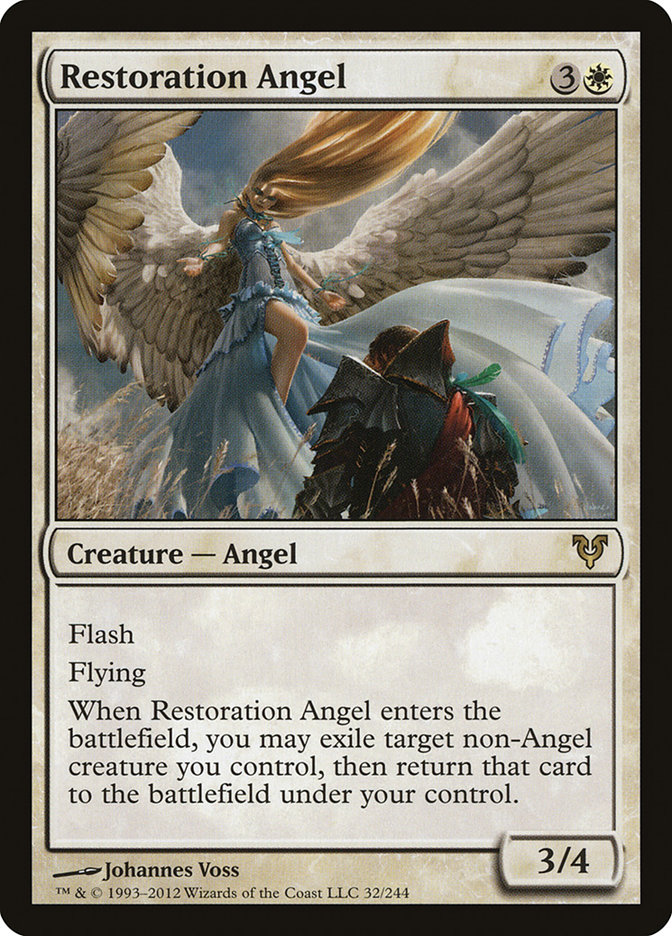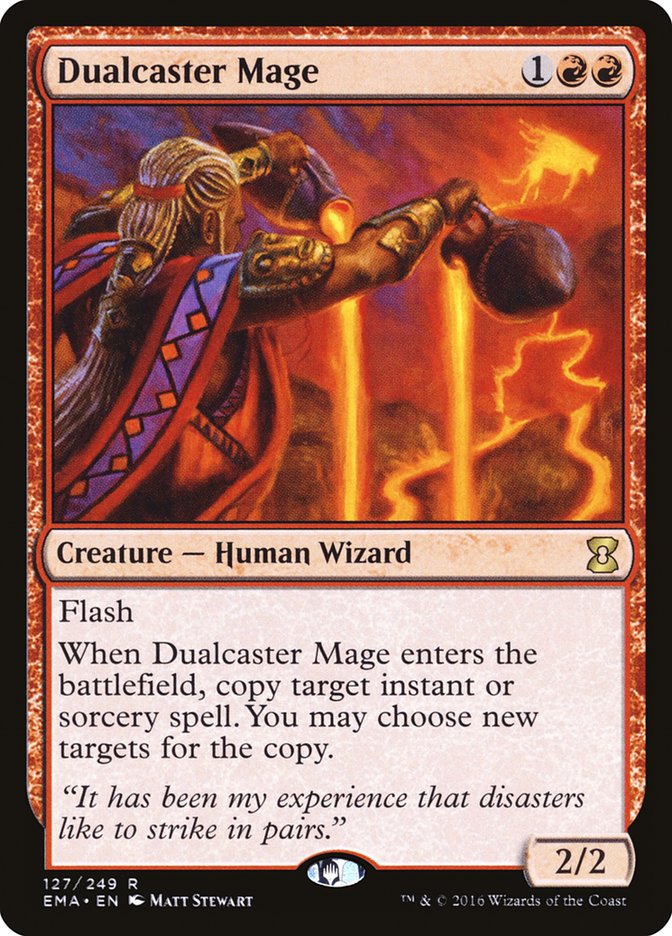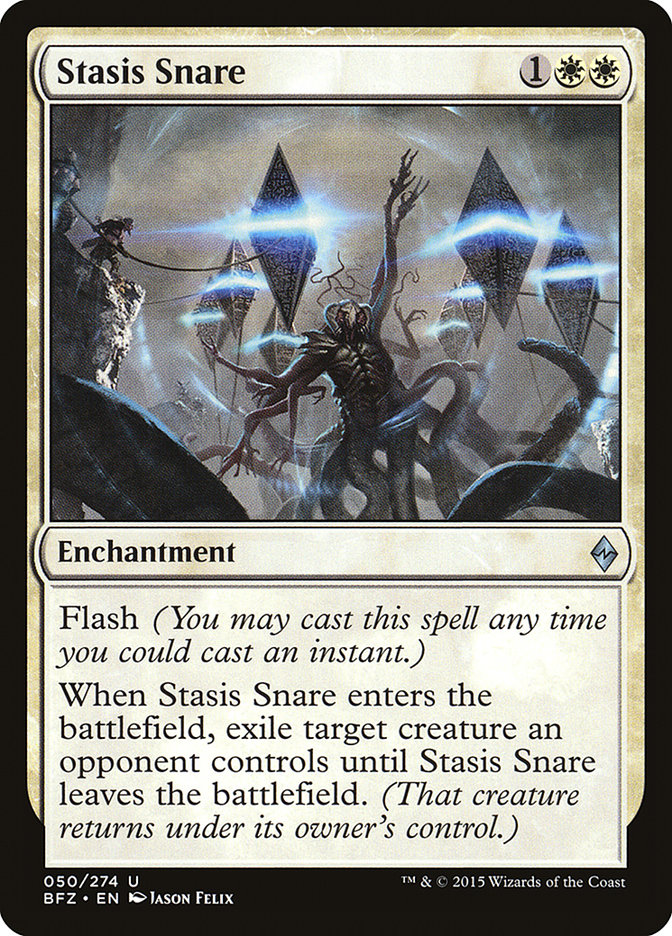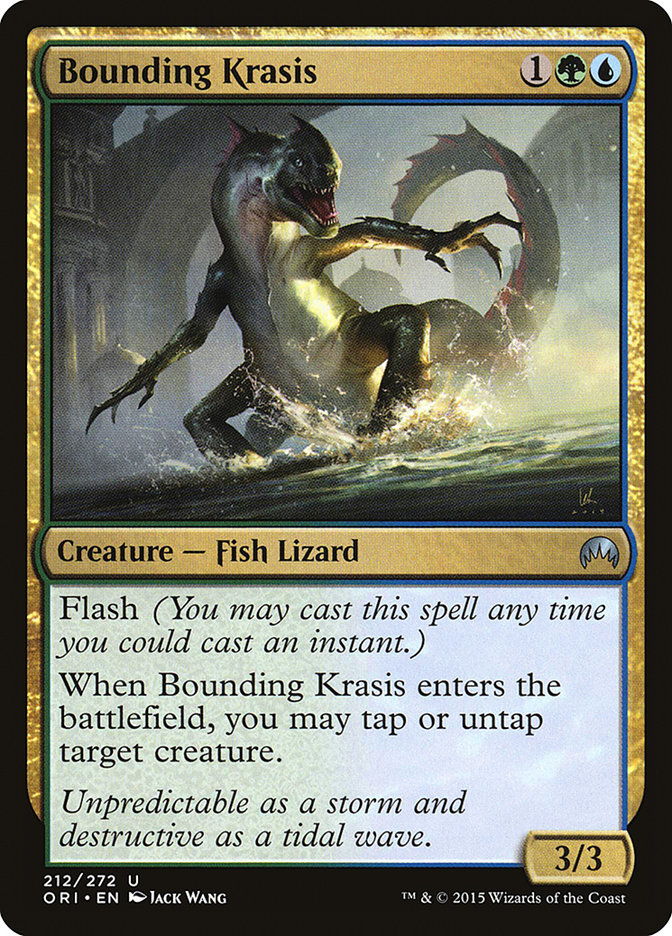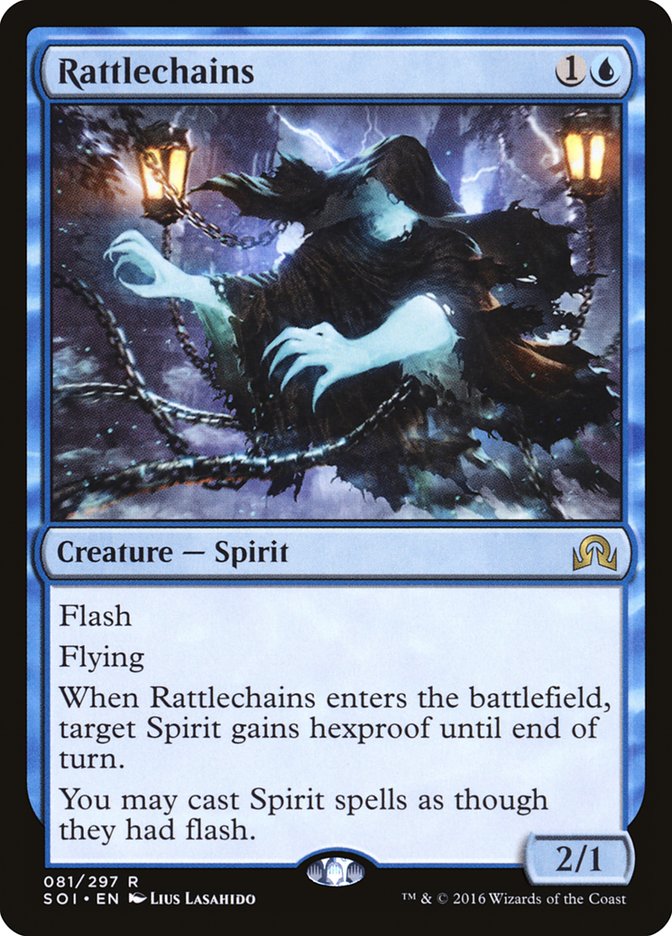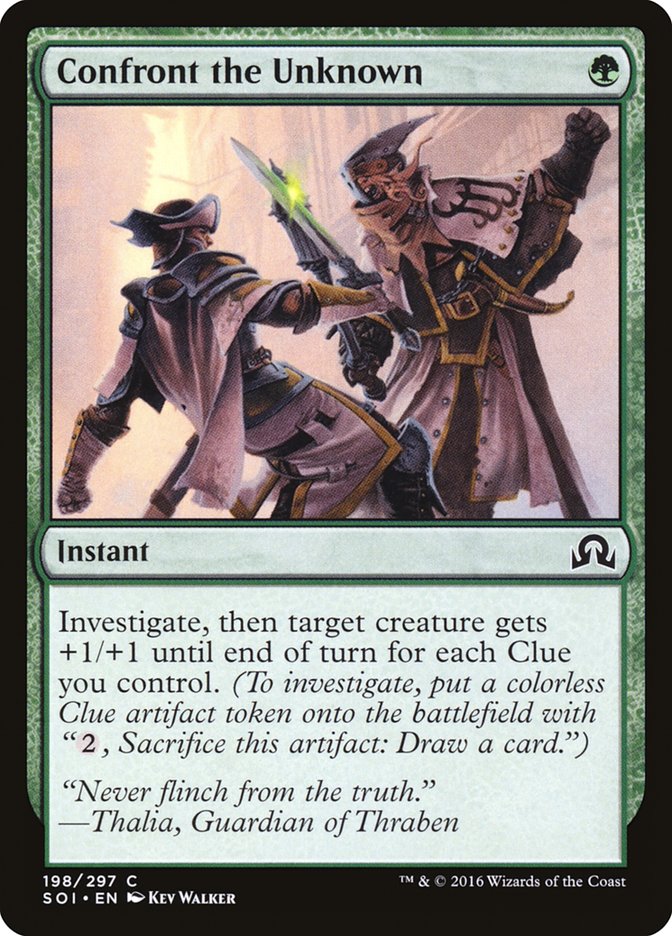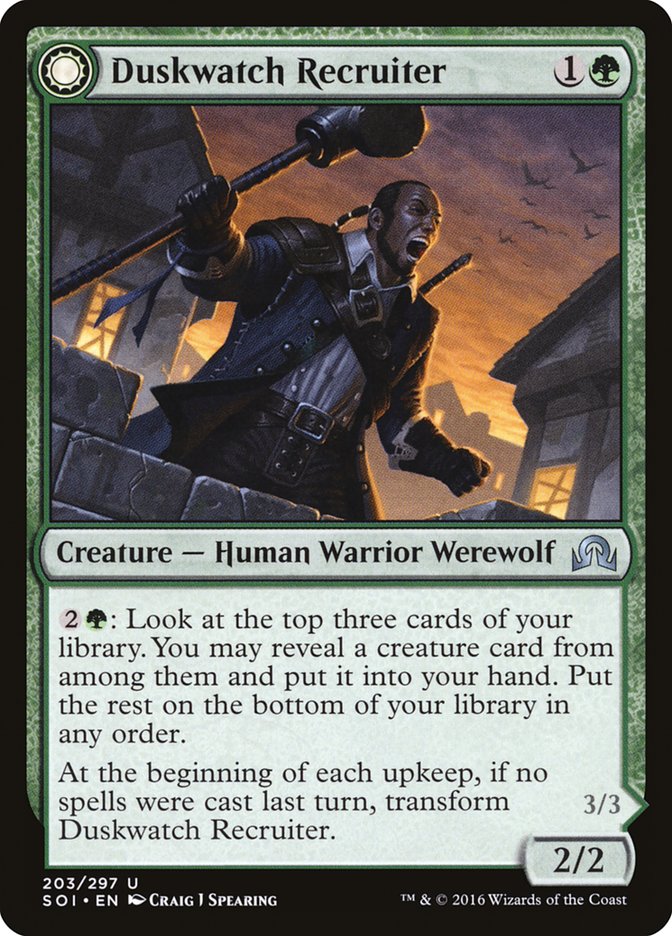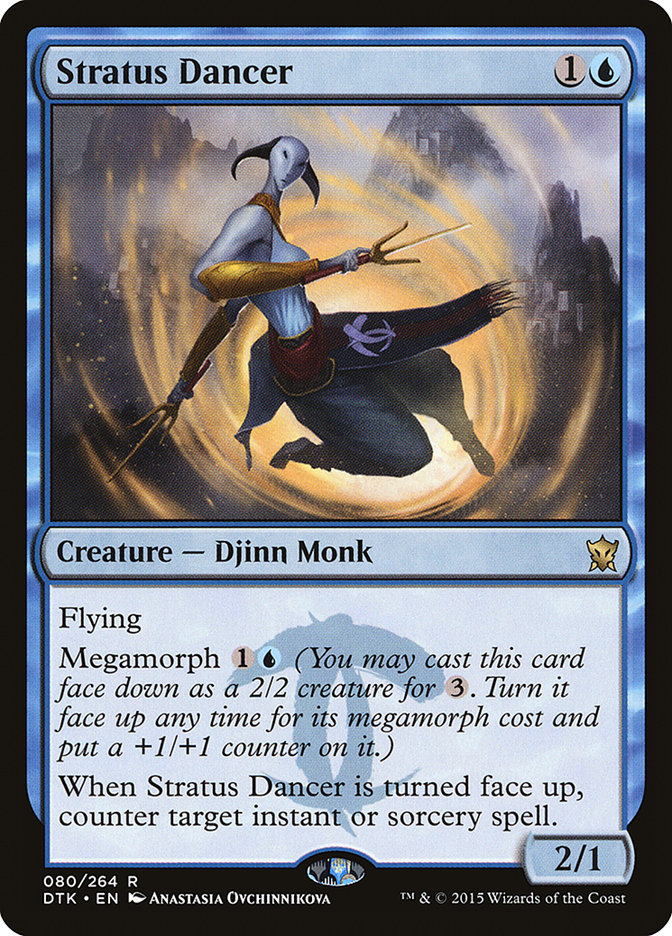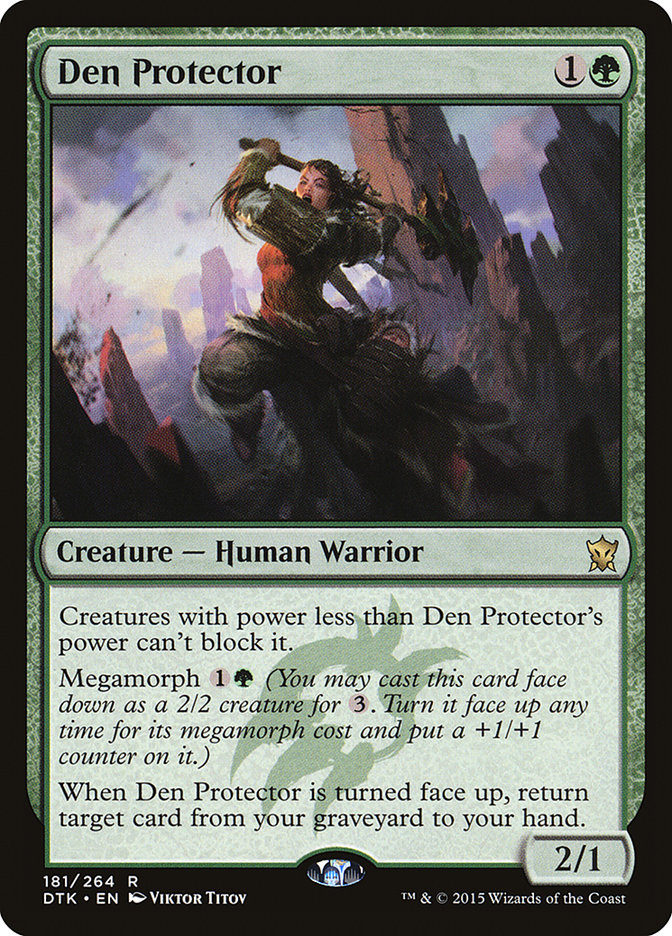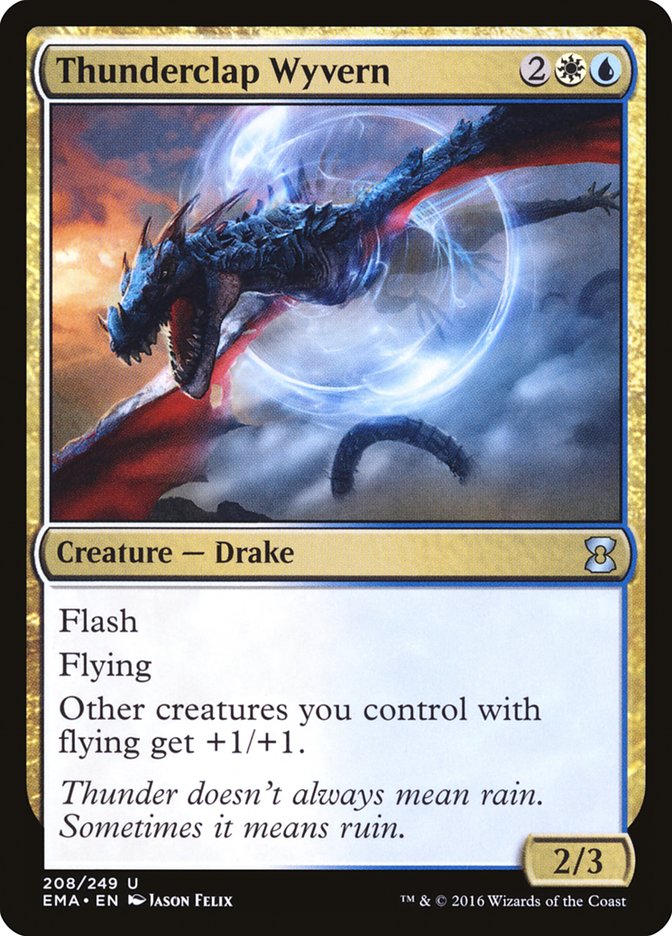Flash has always been a bit of a no-brainer mechanic; it makes any enchantment, artifact, or creature it’s attached to considerably better than it was
before. When slapped on a creature, especially one with a powerful enters-the-battlefield ability, you basically have an instant that sticks around. A
“stickstant,” if you will.
Since before flash was keyworded ten years ago on cards like Ashcoat Bear and Mystical Teachings, casting permanent spells at instant speed has changed the
way you and your opponent play Magic. You can interact with the battlefield in a unique way, and for the most part, everybody enjoys the power and
flexibility that flash provides.
Today’s Standard is no slouch in terms of flash permanents.
Admittedly, though, the best flash spell in the format isn’t even a permanent.
What was once regarded as a cute but ultimately impractical way to add to your battlefield at instant speed has become a titan of Standard and Modern
alike, providing selection and efficiency at any time. If you’re like me and you’re anxious to see it rotate, you might acknowledge what a good card it is
while simultaneously looking to do something else with flash.
Enter Rattlechains.
Rattlechains is the first in a short line of 2/1 flyers for 1U without a downside. Before this set, this most basic of blue abilities was generallynot tied to efficient flyers. That honor fell to black, at a price, or to white, but in
small and spread-out numbers, usually tokens. Rattlechains, Stratus Dancer, and Dimensional Infiltrator remain the only three blue flyers printed at this
exact cost with those stats with no strings attached. In fact, they each have a unique benefit.
Flying is just as legitimate a mode of evasion now as it was when it was first printed more than two decades ago. Today, flyers can still take large chunks
of your opponent’s life total, regardless of their ground game. Thus, if the aviary has the right Birds in it, you can always craft a strategy that fights
on the wing.
Several weeks ago, a U/R Flying deck began getting airtime by doing just that at IQs around the country.
Creatures (16)
Lands (24)
Spells (20)
Sideboard

I’ve seen the deck in action myself, and Goldnight Castigator is really intimidating, providing pressure unlike any other card in the format. That sudden,
nine-toughness ultimatum is terrifying. I wasn’t a big fan of the rest of the red, though, and in practice, I’d seen the deck struggle with providing the
double red necessary to stay on top of its opponents.
My version of flying emerged while I was testing Clues with green, specifically Confront the Unknown.
If you passively build up Clues over the course of the game, there will come a point where you’ll reach a critical mass.
“Make a sixth Clue. Attack with my 3/2 Stratus Dancer.”
“No blocks.”
“Confront the Unknown, Confront the Unknown. Take eighteen?”
“Yep, can’t block.”
Having access to a similar, sudden source of damage was very enticing. You could nickel and dime your opponent and then hulk out with one of your evasive
flyers and obliterate their life total seemingly out of nowhere. Flash creatures give you flexibility for the rest of the game, giving you all the options
you need to stay alive.
Let’s save the universe.
Creatures (24)
- 2 Stratus Dancer
- 4 Silumgar Sorcerer
- 4 Bounding Krasis
- 4 Dimensional Infiltrator
- 4 Rattlechains
- 2 Pack Guardian
- 4 Erdwal Illuminator
Lands (25)
Spells (11)

This deck was cheap and easy to throw together; I already had most of the pieces from drafts and speculation pickups, plus a bit of my aging Dragons of Tarkir stock. While it was never my primary testing deck, I tried it most every chance I got.
Now, it might look bad on paper, but it actually worked pretty well in practice. It put up great results against midrange decks, where their single-card
removal and sweepers were ineffective. Planeswalkers were also ineffective against so many flyers, as their means to protect them were too clunky.
The deck produced some of those “gotcha” games where lots of Clues fueled a huge Confront the Unknown, one time on a flyer and another time on an
untargetable Lumbering Falls. I have to admit, I love the look of an opponent, content with his or her double digit life total, as their eyes widen as they
suddenly stare down out-of-nowhere lethal. From a common one-mana spell, nonetheless! Ongoing Investigation was made for this kind of deck, providing
longevity and durability.
To be honest, I could stop right here. This deck played cleanly for a first draft.
But hey, I’m greedy.
Clues were an effective and flavorful way to perpetuate the deck’s pressure. If I ran out of gas, I could easily cash in any number of
incidentally-generated Clues to pick up a fresh stack of flash creatures. It was easy to craft a mini-turn during my opponent’s end step, sacrificing a
couple of Clues and then casting a couple of the creatures I’d found.
But Duskwatch Recruiter seemed to be an interesting way to dive at the heart of the problem. On its front, it could do what the Clues had done without
having to spend resources to build them up. On its flip side, I could literally spawn an army in seconds. As Krallenhorde Howler, this Werewolf lets you
slim any of the flyers down considerably, allowing you to jam multiple flyers and flash creatures at the end of the turn. Allow it to flip on your turn 3.
Then just flood the battlefield. The Recruiter will return, and you’ll be able to recharge. Cost reductions work great in multiples, so a set of
them seemed warranted. But I still wanted more.
For 1UG, you can copy a Krallenhorde Howler without it ever flipping back. The way copies of transformed cards work, the copy has only one side. Any
request by the game to transform it fizzles. You can copy whatever mode you need, and if you have extra mana, floor that X cost and get a huge
cost-reducer.
These cards benefit on either side if they’re flipped, and casting them as a morph can get very close to free with enough reducers out. We still have our
army of flyers, but diversifying our creature base gives us more options in the late-game and more choices when it comes to the Recruiter’s activation.
Creatures (30)
- 4 Stratus Dancer
- 2 Den Protector
- 4 Silumgar Sorcerer
- 4 Bounding Krasis
- 2 Tajuru Warcaller
- 4 Dimensional Infiltrator
- 4 Rattlechains
- 2 Altered Ego
- 4 Duskwatch Recruiter
Lands (25)
Spells (5)

I tried this one a little less than the first version, but it was just as well. This version struggled without Clues as a way to generate card advantage
and pressure. Furthermore, relying on low-toughness creatures to defend me was ill-advised, and without extra power, the team couldn’t apply enough
pressure, no matter how many cards I drew. Without Duskwatch Recruiter, the deck was clunky and slow. Little did I know, but those Clues had a big part to
play.
I went a bit in the wrong direction. The deck wasn’t flashy in both senses of the word, and it became too weak to sustain its plan.
Maybe I should look at the most obvious combination of the two themes for today, flying and flash.
This solves both problems. It beefs up the creature’s stats, appears instantly, and it flies itself, meaning multiples help each other. If we’re moving
toward Anthems, we’re looking at an old U/W Skies deck, but who knows? That might be just what the doctor ordered.
Creatures (17)
Planeswalkers (2)
Lands (25)
Spells (12)
Sideboard

Anthems everywhere!
This deck’s goal was a little more linear than the other decks: assemble enough flying creatures to put a clock on your opponent, and then, in the few
turns they have left, counter or otherwise upend their plans to make sure you close the game on time. The deck has several interactions I hadn’t otherwise
leveraged. Rattlechains can protect Anafenza, Kin-Tree Spirit and, vice versa, you can cast Anafenza at instant speed, allowing you to assemble a
buffed flash team at the end step.
This deck, while a bit more dull, applied the most consistent pressure of all three decks. These kinds of decks have a tendency to feel a bit more generic,
but because we have such sweet 2/1 flyers for two, we’re still able to add a bit of flavor to this vanilla.
At the end of the day, I have to say that I like the first deck best. Clues are really fun, and the ability to control the end step so cleanly was second
only to the amazing, euphoric feeling of casting Become Immense in Standard without the expenditure of other resources. If anything, this article is an
advertisement for Confront the Unknown; that card is sweet.
Flash will have a role to play as Collected Company disappears, and soon Eldritch Moon, in all its spoiler glory, will provide all sorts of new
strategies, some of which might just involve the end step.
Comments from Last Week
We’re trying something new this week! I really enjoy reading your comments every week and replying to many of them directly, but I want to choose some of
the deeper comments for last week that I want to look at. For those who didn’t catch last week’s article, I talked about Emeria Shepherd, a powerful
reanimation target and enabler, and its impact on multiple Standard decks.
Have you tried out Sword of the Animist? It takes a little mana to get it online, but it puts Shepherd outbof languish range and gives a certain grindy
inevitability.
Your middle list looks like it could benefit from Eerie Interlude. Did you test with it? Flickering Knights and Reflector Mages gains value, and
Flickering Hydras makes it work as a 3-cmc reanimator.
–
Frank Closser
Frank had a great suggestion in Sword of the Animist. One of the biggest tricks to getting this expensive reanimator online is also having a land
drop after casting it. The Sword eliminates that problem; casting the Shepherd in your first main phase, paired with a solid attacker, gives you a
near-unlimited stream of reanimation each turn. Sword of the Animist has been pretty much absent from both my own brewing and others like me, but Frank
reignited my interest in this card!
I am currently working on a version with Emrakul and Behold the Beyond where you just dump your expensive stuff (Emrakul, Ulvenwald Hydra, etc.) and
then reanimate with The Gitrog Monster on the battlefield so that I can go Plains, reanimate Ulvenwald, search up Plains, reanimate Emrakul, play
Plains, reanimate something else. Maybe Ulamog. Gotta see. Also uses tutors with Sidisi, Dark Petition and maybe Traverse. Work in progress.
–
Johann Bong
Johann had a great idea that a black and white reanimator deck can facilitate. Behold the Beyond lets you get everything you need while pitching those
bulky cards you’re rather reanimate. You can get Emeria Shepherd, an Evolving Wilds, and perhaps a Knight of the White Orchid, giving you plenty of gas to
buy back all those cards you’ve discarded. This is a lot of mana you’re talking about, but if you’re a reanimation deck in Standard, we’re going deep.
I too am a huge fan of Emeria Shepherd, and the card that broke it for me was Nahiri, the Harbinger!!!
It was one of those cases of staring at two cards forever and never seeing how good they are together. Use Nahiri to dump good (but too expensive to
cast) stuff into the graveyard early. The ability to ultimate Nahiri for Emeria, then play a plains and get the Nahiri right back is sick and wrong!
Those two together give me everything I could want in the deck!
I’ve had several decks built around Emeria before, but having those two together has been the best one so far!
–
Greg Creswell
Greg’s harnessed the ubiquitous power of Nahiri to toss empty cards into the graveyard, and I’ve found her power to trigger madness second to none in the
format. Using her as a targeted graveyard filler seems great, and moreover, if you haven’t drawn the threat you wish to reanimate, Nahiri can find the
threat herself! Great call!
I’m on the edge of my seat with the newest Eldritch Moon spoilers, and next week, I’d love to talk about some of them from a high level. Which
ones have piqued your interest?



